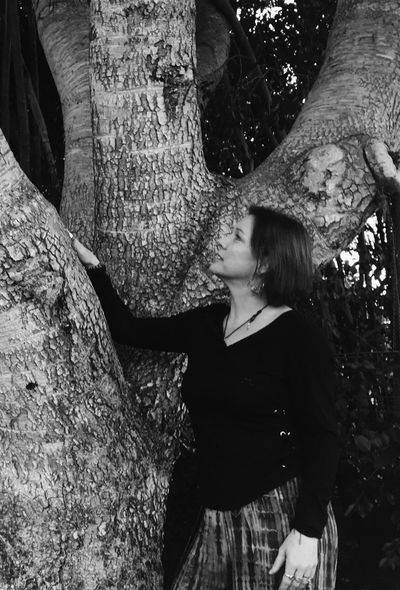...MORE INSPIRATION
Inspirations and Influences
I have always felt a sense of wonder and respect for the environment. I hold fond memories of my childhood and early teens growing up in the thick Australian bush, heavy with the scent of Eucalypt and the deafening chorus of cicada song. We camped, fished, boated, bush walked, swam in the ocean and played on dirt hills in tree-cleared housing estates, coming home only when we heard mum’s call across the paddock at sundown. I built fairy houses at the foot of trees and cloud watched while laying on freshly mown grass and made clover chains among the bees. I always had a sense of this great aliveness and connection when out in nature, knowing that the land had its own language and stories to tell, If only I stayed still long enough to listen.
With Kanaka and Celtic heritage yet originating from Brisbane, I moved to Bundaberg from inland cattle country in 2014. It took a number of years to orient myself to this new place with its vast flat fields of sugar cane, red dirt and produce contrasted with the rocky coral coastline. As a way to get to know this new landscape I drew and painted and explored little pockets of the area with pencil and pad in hand. It was through creating these quick little drawings and observations that I really got to know my surroundings as it invited me to stop, be still and to observe closely, which resulted in a profound sense of belonging to this new place. This is a practice that now comes with me everywhere I go; my sketch books are filled with impressions from my backyard, to Bundaberg to Bali and beyond.
I am curious as to how integral the landscape is, whether it be urban or rural, to our identity and what role it plays in shaping not only who we are as individuals, but as communities, cities and countries as a whole? Further, how important is our relationship with the environment in providing one with a real sense of home and belonging? If our cultural, social, mythic and religious stories are held within the landscape what does this mean for those who are displaced from their cultural and ancestral homeland either by force or by choice? How do we make relationship with and create new stories within a new landscape?
Painting for me is not just about re-creating literal scenes of what I see with my everyday eyes, it is the space where I can ponder these deeper questions and curiosities and express my observations uniquely. For me, to paint the landscape and the world around me, whether it be the teapot on my kitchen table or where the river meets the sea, is to seek out and understand the micro and macro patterns of the landscape, to hear it’s sounds and stories, savour its scent and to see beyond what’s directly in front of me. It is to be in relationship with place and space and to be present to the interconnectedness of all life.
I am certain that a childhood immersed in nature and growing up in a family of storytellers and green thumbs has and continues to be a major large influence on who I am as an artist. Nature is by far my biggest inspiration along with some really powerhouse movements and women artists from the 19th century on including the Fauvists, Frida kahlo, Margaret Olley, Shiloh Sophia, Wendy Sharpe and Sarah Hickey, along with the art of contemporary landscape painters Tim Allen, Sophie Perez & Lynne Flemons. The works and stories of Australia's indigenous artists also facinates me in that their work is a sacred and symbolic representation of their land and relationship to it. I am currently enjoying the works of contemporary Indigenous artist Naomi Hobson from North Queensland. Being an artist allows me to express this deep connection to the landscape and to bring beauty into the world with paint.

Copyright © 2018 Jassy Watson - All Rights Reserved.
Powered by GoDaddy